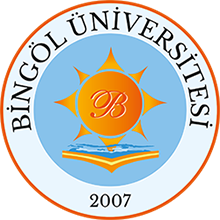A Slow City Movement: The Case of Halfeti in Turkey
Özet
In today's world where globalization is increasing, many cities cannot
ada pt to rapid changes. The changing lifestyles of the inhabitants of
the city cause a rapid loss of urban differences and originalities.
Several movements have emerged to solve these problems. One of these
movements is the slow city movement proposed for a better environment
and social life. The slow city movement sets out the parameters that
ensure the viability of cities, which give importance to the continuity
of the improvement of social, economic, cultural and environmental
qualities. This movement, which strives for the preservation of
originality against the impact of globalization, has a great importance
in order to increase the quality of urban life.
The aim of this work is to identify the strengths and weaknesses of
sustainable development of the slow city declared places, and to
identify the threats and opportunities that can be faced. In this way,
targets and strategies for the sustainability of the desired criteria
for cities declared as slow cities can be determined. In the study,
environmental analysis and situation analysis were carried out by
observation and inventory collection method in Halfeti province of Urfa
declared as slow city. The local people and tourists who visited the
area were interviewed and SWOT analysis was conducted by brainstorming
method. The district of Halfeti consists of two regions. The old Halfeti
area is a very old settlement; some of the buildings it contains are
under the waters of the Euphrates, in the appearance of an open-air
museum. The new Halfeti is a region formed with non-specific regulations
and illegal and distorted building is seen intensively. With the
declaration of Halfeti as a slow city, the tourism movements have begun
to accelerate. As a result of this study, it has been determined that
this region with historical and natural beauty has been caught
unprepared for tourism development. For this reason, it is necessary to
prioritize rehabilitation efforts in the region and prepare action plans
for the new Halfeti settlement. The conclusion is that Halfeti's unique
identity values should be promoted on a global scale and protected as
cultural heritage. It is expected that the results obtained in the study
will also be a road map for other slow cities similar to Halfeti.
Koleksiyonlar

DSpace@BİNGÖL by Bingöl University Institutional Repository is licensed under a Creative Commons Attribution-NonCommercial-NoDerivs 4.0 Unported License..













